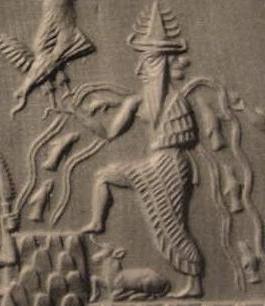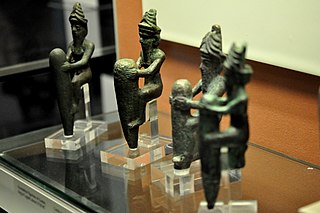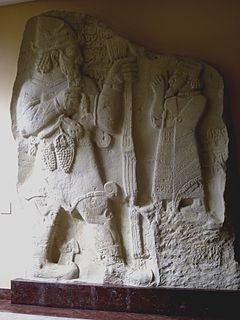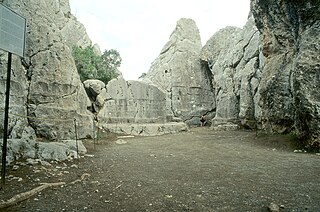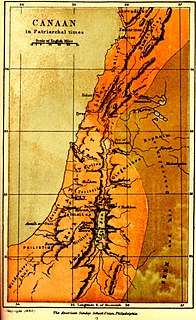The Story of Appu is a mythological Hittite text (CTH 360). The text is fragmentary, and the sequence of events in the story is a reconstruction.
The text is usually taken as an account of a Hurrian myth, [1] but it does not itself contain any Hurrian names or other vocabulary to support this judgement. The geographical setting is in Mesopotamia. [2]

Mesopotamia is a historical region of Western Asia situated within the Tigris–Euphrates river system, in modern days roughly corresponding to most of Iraq, Kuwait, parts of Northern Saudi Arabia, the eastern parts of Syria, Southeastern Turkey, and regions along the Turkish–Syrian and Iran–Iraq borders.
The reconstructed argument of the text is as follows: Appu is a rich man, but he is unhappy because he has no son. The text hints at the possibility that Appu doesn't know anything about sex. He sacrifices a lamb to ask the help of the gods. The sun-god appears and advises him to get drunk and then have sex with his wife. Eventually, Appu's wife gives birth to a first son, named Idalu (mḪUL-lu) "bad, evil". At this point the text alludes to a rite of name-giving, paralleled in the Song of Ullikummi , where the newborn is set on the knee of the father. Appu's wife later gives birth to a second son, named Ḫandanza (mNÍG.SI.SÁ-an) "good, righteous". When both sons have reached adult age, Idalu suggests that they divide the paternal estate among them. He argues that, as each of the gods has his own city, so should they also each have their own property. Idalu tricks his brother, taking most of the estate and leaving him only with a barren cow. But the sun-god blesses the cow and restores her fertility. At this point the first tablet ends and the rest of the story is very fragmentary.

Organisms of many species are specialized into male and female varieties, each known as a sex. Sexual reproduction involves the combining and mixing of genetic traits: specialized cells known as gametes combine to form offspring that inherit traits from each parent. The gametes produced by an organism define its sex: males produce small gametes while females produce large gametes. Individual organisms which produce both male and female gametes are termed hermaphroditic. Gametes can be identical in form and function, but, in many cases, an asymmetry has evolved such that two different types of gametes (heterogametes) exist.

Domestic sheep are quadrupedal, ruminant mammals typically kept as livestock. Like most ruminants, sheep are members of the order Artiodactyla, the even-toed ungulates. Although the name sheep applies to many species in the genus Ovis, in everyday usage it almost always refers to Ovis aries. Numbering a little over one billion, domestic sheep are also the most numerous species of sheep. An adult female sheep is referred to as a ewe, an intact male as a ram or occasionally a tup, a castrated male as a wether, and a younger sheep as a lamb.

Utu, later worshipped by East Semitic peoples as Shamash, is the ancient Mesopotamian god of the sun, justice, morality, and truth, and the twin brother of the goddess Inanna, the Queen of Heaven. His main temples were in the cities of Sippar and Larsa. He was believed to ride through the heavens in his sun chariot and see all things that happened in the day. He was the enforcer of divine justice and was thought to aid those in distress. According to Sumerian mythology, he helped protect Dumuzid when the galla demons tried to drag him to the Underworld and he appeared to the hero Ziusudra after the Great Flood. In the Epic of Gilgamesh, he helps Gilgamesh defeat the ogre Humbaba.
It appears to deal with litigation between the brothers; Idalu seems to take Handanza to court before the sun-god at Sippar. When the god rules in favour of Handanza, Idalu curses, and the sun-god refuses to conclude the case, sending the brothers to Ishtar at Nineveh to conclude the case. [3]

Nineveh was an ancient Assyrian city of Upper Mesopotamia, located on the outskirts of Mosul in modern-day northern Iraq. It is located on the eastern bank of the Tigris River, and was the capital of the Neo-Assyrian Empire. Today it is a common name for the half of Mosul which lies on the eastern bank of the Tigris.
